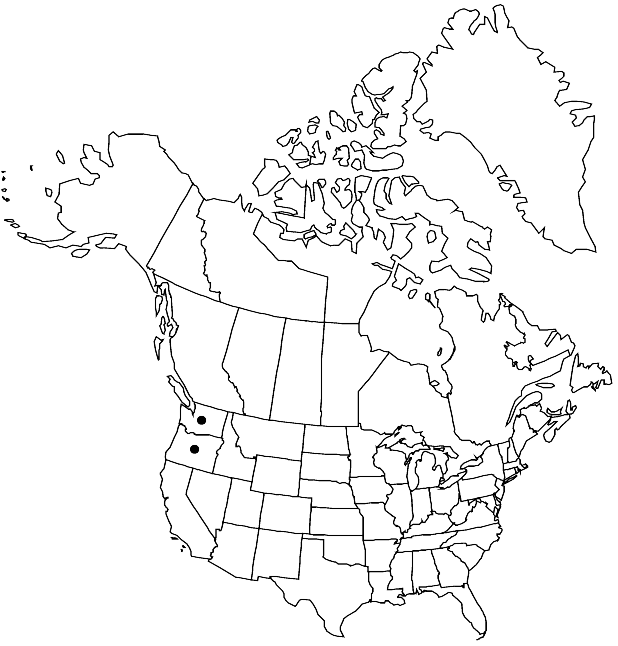Arabis furcata
Proc. Amer. Acad. Arts 17: 362. 1882.
Perennials; (caudex simple or branched, covered with persistent petiolar remains); glabrous or sparsely pubescent, trichomes simple or short-stalked, forked (0.3–1 mm), these rarely mixed with fewer, unequal 3-rayed ones. Stems simple or few from base (caudex), erect, usually unbranched, rarely branched (few) distally, (0.7–) 1–3.8 (–4.5) dm, (glabrous throughout or sparsely pubescent basally to distally). Basal leaves: petiole (0.4–) 1–3 (–4.5) cm, (glabrous or sparsely ciliate); blades oblanceolate, spatulate, or obovate, (0.7–) 1.2–3 cm × 5–17 (–22) mm, margins entire or dentate, (often ciliate), apex obtuse, surfaces glabrous or sparsely pubescent, trichomes short-stalked, forked and simple. Cauline leaves (2 or) 3–5 (or 6); blade linear, oblong, obovate, or oblanceolate, 0.7–3 (–4) cm × 3–8 mm, base cuneate, not auriculate, margins usually entire, rarely few-toothed, apex obtuse, surfaces usually glabrous, rarely margins ciliate. Racemes simple, (dense or lax). Fruiting pedicels suberect, ascending, or divaricate, (2–) 4–17 (–22) mm, (glabrous). Flowers: sepals (greenish), oblong, 3–4 × 1.5–2 mm, (usually glabrous, rarely with few trichomes subapically), lateral pair saccate basally; petals white, spatulate, 7–11 × 2.5–4 mm, apex rounded; filaments 3.5–5 mm; anthers oblong, 0.8–1 mm. Fruits ascending to suberect, (not appressed to rachis), slightly torulose, sometimes slightly curved, strongly flattened, (2–) 2.5–4 (–4.6) cm × 1.7–2.2 mm; valves each with prominent midvein extending full length; ovules 14–26 per ovary; style 0.5–1.2 (–1.6) mm, (slender). Seeds winged distally, oblong to broadly ovate, (1.5–) 1.8–2.5 (–3) × 1–1.3 mm; wing (0.2–) 0.4–0.8 (–1) mm wide.
Phenology: Flowering May–Jul(-Aug).
Habitat: Open slopes, alpine meadows, cliffs, ridge crests
Elevation: (50-)1000-2100 m
Discussion
Arabis furcata is known in Washington from Chelan, Kittitas, Klickitat, Okanogan, Skamania, and Yakima counties, and in Oregon from Clackamas, Hood River, Multnomah, and Wasco counties.
Selected References
None.
Lower Taxa
"elongated" is not a number."thick" is not a number."dm" is not declared as a valid unit of measurement for this property."dm" is not declared as a valid unit of measurement for this property.
